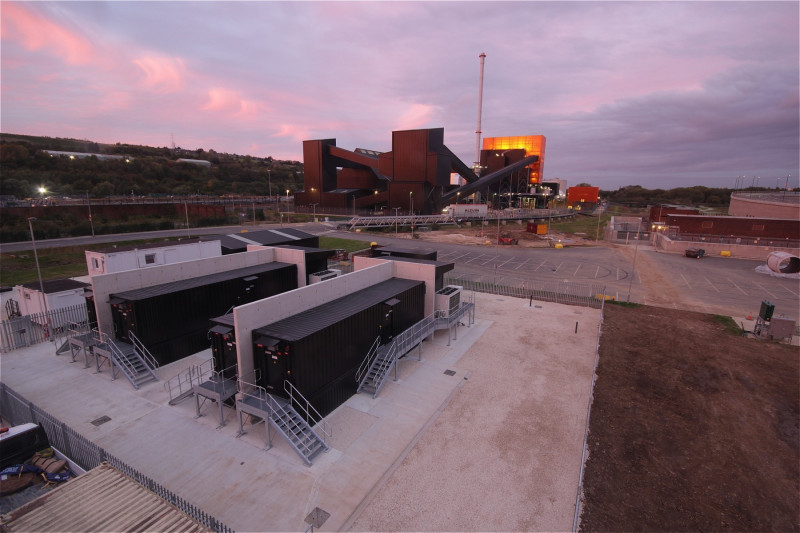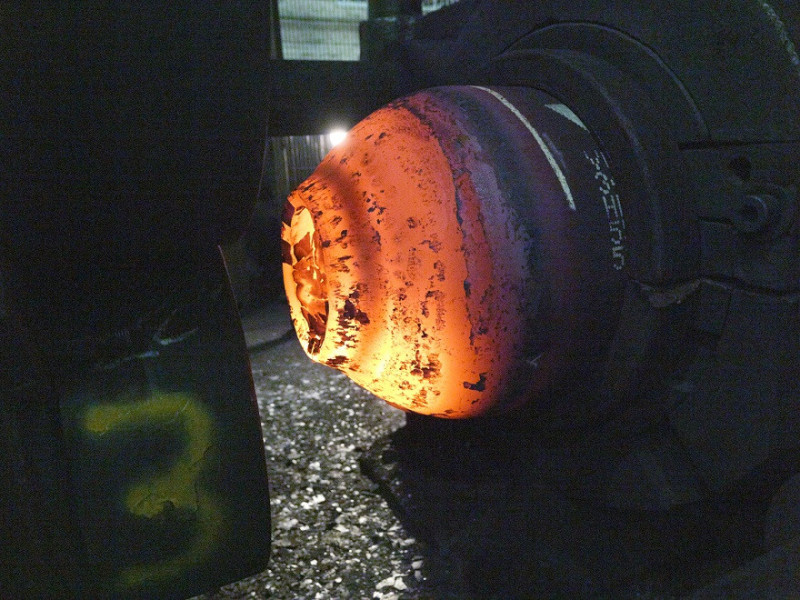Exploring a green hydrogen future for Sheffield’s steelmakers




"Hydrogen will play a significant role in our energy future, mainly powering energy-intensive industries and long-distance transport. It sits alongside the drive for heat pumps meeting domestic heating needs and a greater role for district energy schemes in urban areas."
- Chris Lovatt, Chief Operating Officer of E.ON UK Energy Solutions


- Study finds hydrogen could cut CO2 emissions from city’s steel industry by 40% [1]
- Government funding for E.ON, University of Sheffield and industry to explore renewable fuel from Blackburn Meadows renewable energy plant
Sheffield’s world-renowned steelmakers could save up to 3,500 tonnes of carbon emissions each year by switching from natural gas to locally produced green hydrogen, a Government-funded study supported by the city’s industry has found.
The pioneering project led by energy company E.ON, Chesterfield Special Cylinders, the University of Sheffield’s Energy Institute and other partners across the region is exploring ways to generate green hydrogen at the Blackburn Meadows renewable energy park which can then be used as a cleaner fuel source for Sheffield’s steelmakers and other energy-intensive industries.
The early stages of the project found strong desire from steelmakers and other industries to find a cleaner alternative to natural gas in industrial processes. Switching steelmaking to being fuelled by hydrogen could be commercially viable, the project found, and sustainable over the longer term. It could maintain the performance and product quality for manufacturers with carbon emissions 41.8% lower than if using natural gas. That means the three manufacturers taking part in the initial trials could save around 3,500 tonnes of CO2 each year.
The project has been awarded £1 million of Government funding – one of only two projects to receive such funding – to explore the commercial and engineering needs of generating, transporting and using hydrogen, as well as developing the commercial offer to industrial customers. If that is successful, the next stage will be a technical pilot project at the Blackburn Meadows site, with potential for future expansion if the project is taken forward to a full commercial demonstration.
The project to explore the potential of a more planet-friendly fuel for steelmakers is funded by the Department of Energy Security & Net Zero and its Net Zero Innovation Portfolio (NZIP) and is led by E.ON alongside Chesterfield Special Cylinders, Glass Futures, University of Sheffield Energy Institute and Sheffield Forgemasters.
Chris Lovatt, Chief Operating Officer for UK Solutions at E.ON, said: “Hydrogen will play a significant role in our energy future, mainly powering energy-intensive industries and long-distance transport. It sits alongside the drive for heat pumps meeting domestic heating needs and a greater role for district energy schemes in urban areas.
“The first stages of our trial show the technology works and can support the industry’s needs for alternative fuels as well as Sheffield’s wider sustainability ambitions. We know there are challenges to overcome before this becomes a viable solution for industry but the success so far has been rewarded by further funding from Government to explore the potential of green hydrogen as a solution for Sheffield’s world-renowned steelmakers.”
Professor Mohamed Pourkashanian, Head of the University of Sheffield Energy Institute, said: “We are thrilled that this project has received funding from the UK Government to progress to a second stage. The work we’re doing for this project at the University of Sheffield Energy Institute, including computational Fluid Dynamic (CFD) modelling and in-depth hydrogen research, will help bring us a step closer to vital industrial decarbonisation and beyond.
“It is increasingly important to get the technological solutions we need to reduce emissions right first time, so carrying out these detailed and industry-supported projects at the University of Sheffield Energy Institute means we can test, scale and ultimately implement these alternative solutions as efficiently as possible.”
Chris Walters, Chief Executive for CSC’s parent company Pressure Technologies, said: “Proudly based in South Yorkshire, Chesterfield Special Cylinders has designed and manufactured safety-critical hydrogen storage solutions for over 80 years. We are delighted to be a key partner in this project, exploring potential options to decarbonise forging processes at our Sheffield facility and showcasing our solutions for the safe and cost-effective storage and transportation of hydrogen."
Rob Ireson, Innovation & Partnerships Manager at Glass Futures, added: “We are excited to begin the next phase of this project to evaluate the performance of hydrogen and hydrogen-natural gas blends in steel manufacturing furnaces. Using data carried out in our Combustion Test Bed furnace in the first phase of research, which also formed the basis of the modelling carried out by the University of Sheffield, we can begin to apply the method for simulation and testing of hydrogen firing to furnaces at an industrial scale to verify hydrogen’s effectiveness.”
Commenting on the project, Clive Betts, MP for Sheffield South East, said: “I very much welcome this announcement. Measures that can reduce carbon emissions from steel production in Sheffield are very welcome. I have previously visited the Blackburn Meadows site and I look forward to seeing how the pilot progress.”
Gill Furniss, MP for Sheffield, Brightside and Hillsborough, added: “I congratulate E.ON's Blackburn Meadows biomass project on securing new funding for the second phase of the trial. I look forward to seeing the project develop innovative ways to decarbonise our important steel sector."
Green hydrogen is produced by splitting water into both hydrogen and oxygen through a process called electrolysis. Using electricity from renewable sources means it is seen as the cleanest option for industrial uses. The UK government has ambitions to reach 10GW of low carbon hydrogen generation by 2030.
Environmental pressures, the war in Ukraine and the spike in global gas prices have all driven interest in the benefits of switching to green hydrogen which has a strong role to play in decarbonising heavy, polluting industries.
In the case of Blackburn Meadows, electricity is created from waste wood that would otherwise have gone to landfill. Blackburn Meadows already captures the heat from the power generation process to feed a district heating network in the Lower Don Valley and houses a 10MW battery to support the local grid at times of high power demand.
Notes to Editors:
Carbon savings based on an estimated carbon intensity of hydrogen delivered to the end users of 32.90 gCO2e/MJLHV, compared to 56.19 gCO2e/MJLHV for natural gas (from UK Government emissions factors).
The £26 million Industrial Hydrogen Accelerator Programme provides funding for innovation projects that can provide evidence on end-to-end industrial fuel switching to hydrogen. The programme is funded through the Department of Energy Security & Net Zero and aims to accelerate the commercialisation of innovative clean energy technologies and processes through the 2020s and 2030s.
Legal information
The information (including any forecasts or projections) contained in these press releases (the "Information") reflects the views and opinions of E.ON on the date of the press release. The Information is intended as a guide only and nothing contained within these press releases is to be taken, or relied upon, as advice. E.ON makes no warranties, representations or undertakings about any of the Information (including, without limitation, any as to its quality, accuracy, completeness or fitness for any particular purpose) and E.ON accepts no liability whatsoever for any action or omission taken by you in relation to the Information. Any reliance you place on the Information is solely at your own risk. These press releases are the property of E.ON and you may not copy, modify, publish, repost or distribute it without our permission. © E.ON